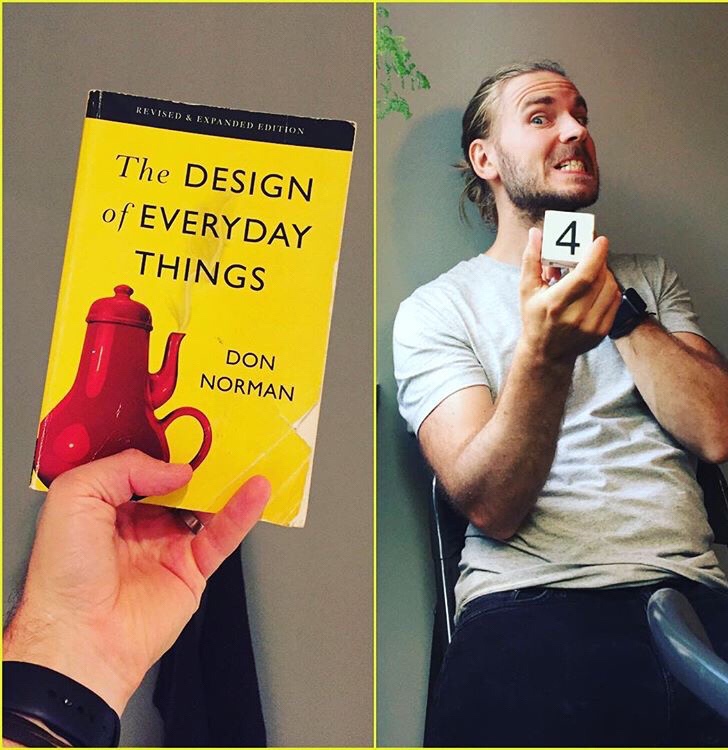
Sometimes you need something completely different. This was a palate cleanser book for me.
—————————–
Engineers are too logical at times, while people are not. As a game developer, you something hear people complaining: “They are playing it wrong!” when you first let people outside your project group play the game for the first time.
—————————–
Are the users really at fault? Maybe we have to accept human behavior the way it is and not the way we want it to be? This is the main point of this book; when people fail to follow the products complex rigid rules, the operator are blamed for not understanding. It should be the other way around and it’s the designers job to make sure that’s the case.
—————————–
📝 Conceptual model: An explanation, usually highly simplified, of how something works.
—————————–
📝 Root-cause analysis: asking “why?” until the ultimate, fundamental cause of the activity is reached.
—————————–
📝 Semiotics: the study of signs and symbols.
—————————–
📝 Mapping: the relationship between two sets of thing. I.e lights mapped to switches.
—————————–
📝 Learned helplessness: Failing several times by accident and thereby start to doubt ones capabilities.
—————————–
📝 Skeuomorphic design: incorporating old, familiar ideas into new technologies even though the no longer play a functional role. I.e implementing “old car” sounds into electrical cars.
—————————–
📝 “All artificial things are designed.”
—————————–
⭐️ TAKEAWAY: It’s not my fault that I can’t turn on my parents oven.
—————————–
This books falls very close to being a straight up textbook, but great examples and interesting anecdotes keeps it entertaining all the way. You won’t look at a man-made object the same way again! I learned a lot from this detour into design.
—————————–
When was the last time you threw yourself into a book on an unexpected subject? 😀🤔
—————————–
4/5 stars

Find more great books to read on my the Great Books List
Video Reviews every week on YouTube and support the BookLab mission on Patreon


I’ve been looking at your posts and really like how you write! Just wanted to tell you to keep it up!
Alsooo I might pick this book up because my sister is doing a bachelors degree in Spatial Design and sometimes I help her out with her assignments. This would be a helpful read I’m sure.
Thank you! I’m happy to hear that! 😀